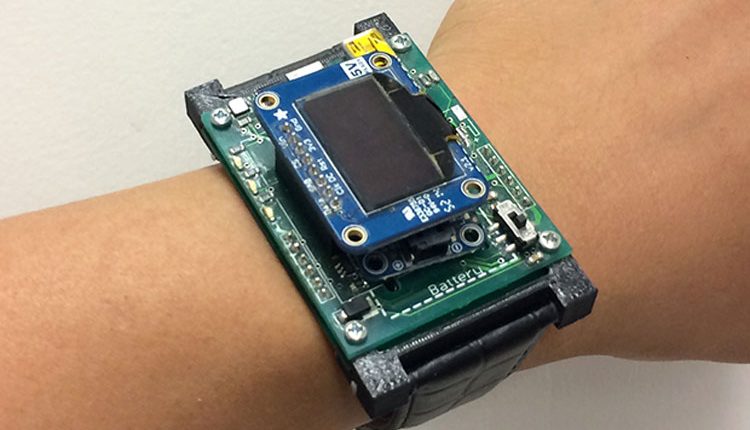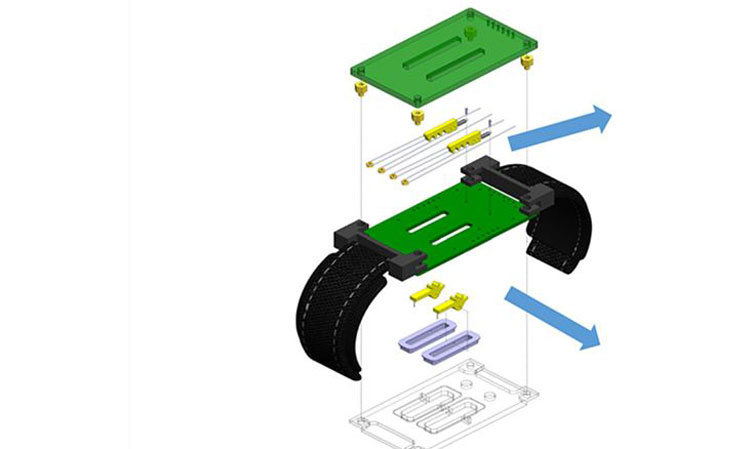Most people fear mosquitoes, after all they are some of the most adept bloodsuckers on Earth, just a quick jab and sharp mouthparts plunge into human skin in search of a juicy blood vessel.
It’s no surprise, then, that bioengineers have used the pest as inspiration for a device to periodically and independently sample the blood of individuals with diabetes.
Fingerpricking, the most common method used today, can be a tedious and painful process, and many companies have raced to develop alternative approaches, including glucose sensor implants and semi-automated monitoring devices.
Introducing the ‘e-Mosquito.’ Since 2007, a team at the University of Calgary in Canada has been developing a fully autonomous, minimally invasive device that is pre-programmed to ‘bite’ one’s skin at various times during the day to monitor blood glucose levels. They recently premiered their latest prototype, a watch-like device that taps into capillaries under the skin and deposits a drip of blood onto a glucose-testing strip.
“The idea is to have periodic, spontaneous and autonomous biting resulting in reliable blood testing,” said Martin Mintchev, senior author on the project. “It’s a very significant step in demonstrating autonomous contact with the capillary.” In addition to monitoring blood glucose, Mintchev imagines the device someday being used to do other blood tests, such as genetic testing or cancer screening, from the comfort of one’s home.
Early versions of the device relied on piezoelectric actuators to pierce the skin with a needle, but those moving parts were expensive and bulky, so the first prototypes were roughly the size of a deck of cards – not something you’d want to wear on your wrist or arm.
Eventually, in collaboration with Orly Yadid-Pecht, an expert in compact microsystems at Calgary, the team switched to a shape memory alloy (SMA)-based actuator. This inexpensive composite metal contracts when heated, then re-forms into its original shape. When equipped with a small needle, the SMA-based actuators produced much greater penetration force into the skin than the bioelectric actuators and allowed the team to significantly miniaturize the device, said Mintchev.
Now, the prototype consists of two parts: a reusable watch-like top consisting of the battery, LED display, actuator and various other components, and a disposable bottom cartridge equipped with needle and test strip. The whole prototype is small enough to sit on the wrist and, more importantly, the penetrating needle reaches a capillary under the skin every single time, said Mintchev.
According to the authors, the ‘bite’ doesn’t hurt. Mintchev and numerous volunteers report that the unanticipated, quick jabs are similar to being bitten by a mosquito you didn’t even know was there. The device can be pre-programmed to take samples at various times during the day and then wirelessly transmit the glucose results to a smartphone or doctor’s office.
Moving forward, the e-Mosquito is at a crossroads. Although the current actuator consistently pierces a blood vessel, it only pulls up a small drop of blood—too small for reliable results on commercial glucose testing strips. So the team can either build a bulkier actuator that extracts enough blood to use on those strips (and creates a larger, more painful wound for the patient) or they can continue to miniaturize the device by developing custom glucose sensing technology.
Mintchev has opted for the latter. “We’re of the opinion that a custom-designed strip, integrated around the needle, is the solution to this issue,” he commented. That way, the device can be made very small—worn as a bracelet or small arm cuff—and still get an accurate glucose reading from blood.
Developing a new type of glucose testing strip will be more expensive in the short-term and take more time and effort to be approved by the FDA, notes Mintchev. But if such strips are eventually mass-produced, he expects the cost could be competitive with current commercial glucose monitoring technologies.



Comments are closed, but trackbacks and pingbacks are open.